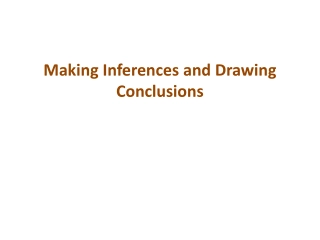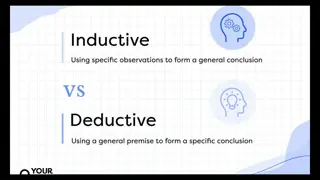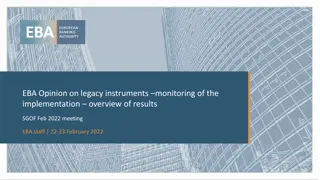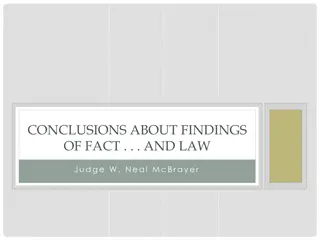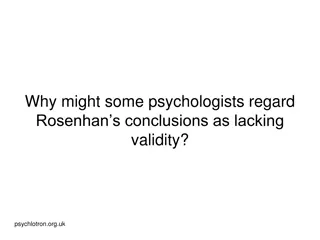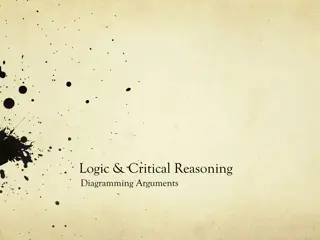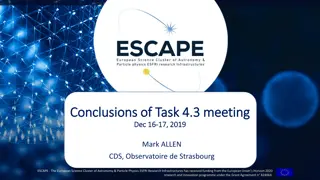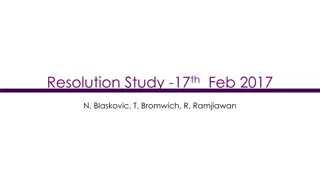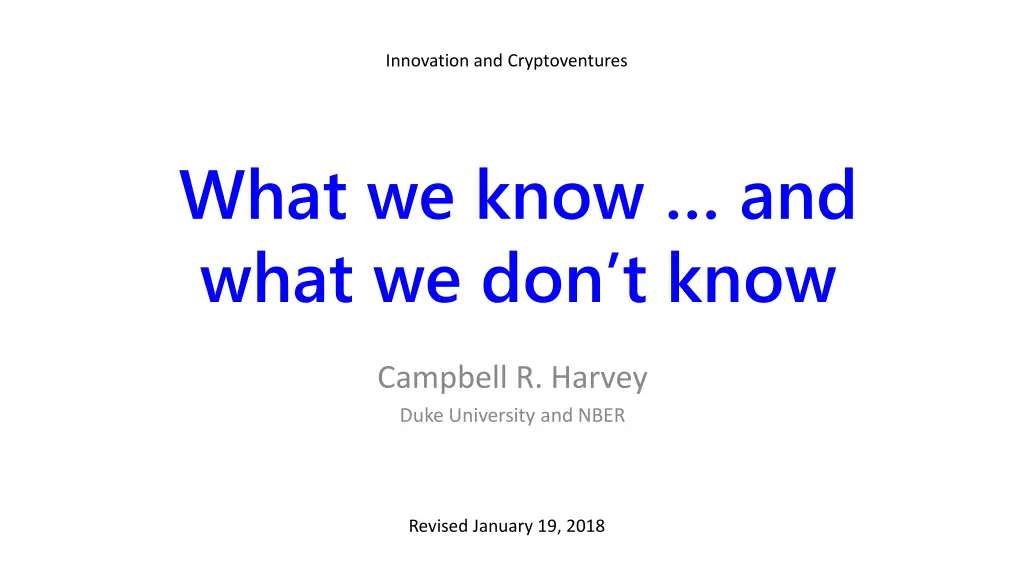
Understanding Blockchain Technology and Cryptoventures
Explore the nuances of blockchain technology, its classifications (public and private), diverse applications beyond cryptocurrencies, and various visions in the realm of cryptoventures. Delve into the mechanics of blockchain chains and their implications in transforming transactions and ownership verification.
Download Presentation

Please find below an Image/Link to download the presentation.
The content on the website is provided AS IS for your information and personal use only. It may not be sold, licensed, or shared on other websites without obtaining consent from the author. If you encounter any issues during the download, it is possible that the publisher has removed the file from their server.
You are allowed to download the files provided on this website for personal or commercial use, subject to the condition that they are used lawfully. All files are the property of their respective owners.
The content on the website is provided AS IS for your information and personal use only. It may not be sold, licensed, or shared on other websites without obtaining consent from the author.
E N D
Presentation Transcript
Innovation and Cryptoventures What we know and what we don t know Campbell R. Harvey Duke University and NBER Revised January 19, 2018
Blockchain No one type of blockchain. It is a general classification. Public: Distributed ledger Blocks cryptographically linked with hashes Anyone can add blocks Generally transparent (Quorum partially) Verification done with DSA and history of blockchain Immutable PoW or PoS (potentially ZKP in future) Campbell R. Harvey 2018 3
Blockchain No one type of blockchain. It is a general classification. Private: Distributed ledger Blocks cryptographically linked with hashes Only permissioned can add blocks Generally transparent to permissioned parties Verification done with DSA and history of blockchain Mutable PoW or PoS (potentially ZKP in future) Campbell R. Harvey 2018 4
Blockchain Many different uses: Secure, quick, and efficient transactions (transactions are generally defined and they could involve transfer of property or the transfer of information as in a digital twin). Transactions need not involve cryptocurrency. Verification of ownership (again, generally defined, it could be you own your identity) Common feature: They disintermediate someone or some entity Everyone benefits except the disrupted intermediary! Campbell R. Harvey 2018 5
Blockchain Many visions: A single master chain. The bitcoin blockchain is currently the strongest and there are millions of sidechains that are connected to the master chain. There is programming flexibility on the side chains though the master chain is inflexible. It is also possible the ethereum chain becomes the master chain. Multiple master chains. Here there are a small number of very secure master chains, like bitcoin and ethereum. Each has millions of side chains. It may be possible in the future to link the chains. Private and public chains. Depending on the need, there could be millions of private chains and a smaller number of public chains. The private chains are not necessarily connected to the public chains. Hybrid databases also exist using some blockchain features. Campbell R. Harvey 2018 6
Blockchain Chain mechanics: Transactions are group together. A hash of the transaction block links the block to the next one. In the bitcoin blockchain, transactions are plaintext for anyone to see (i.e., not private). In other blockchains, the transactions may be encrypted or hashed. In bitcoin, transactions are unspent outputs. All new coins originate from miners. Each unspent transaction output is associated with a private key. If Alice pays Bob, then Alice opens her lockbox with her private key and deposits the coin in Bob s lockbox. The transaction output is now associated with Bob s private key. Transactions can have many inputs and many outputs Campbell R. Harvey 2018 7
Blockchain Chain mechanics: Transactions are digitally signed with the elliptic curve digital signature algorithm The ECDSA is a new way to think about addition and multiplication (as with hashing, there are no decimals or floating points needed) With the public key, the message and the digital signature, we can verify mathematically that the person signing is in possession of the private key Campbell R. Harvey 2018 8
Blockchain Chain mechanics: The main hashing algorithm used is the SHA-256 Each input produces a unique 256 bit (or 64 hexadecimal) output Inputs can be arbitrarily large This is not encryption it is a one-way function We did SHA-1 in class which involves 4 rounds each with 20 steps Campbell R. Harvey 2018 9
Blockchain Chain mechanics: Campbell R. Harvey 2018 10
Blockchain Chain mechanics: Campbell R. Harvey 2018 11
Blockchain Chain mechanics: SHA-1 has 4 rounds (each with different functions and round constants) SHA-256 has 64 rounds (each with different functions and round constants) Much harder to create a collision with SHA-256 Again, a collision would be a situation where you could replace a block or part of a block and the same hash is generated Inevitable that we move to SHA-512 or SHA-3 in the future Note. We are talking collision not undoing a hash which can only be done with brute force and we don t have the energy to do that. Campbell R. Harvey 2018 12
Blockchain Symmetric and Asymmetric Keys Symmetric keys mean a common key is used to encrypt and decrypt Asymmetric keys involve a key pair. Something can be encrypted with a public key and decrypted with a private key. The private key is mathematically linked to a public key. We always start with the private key (a random number) and then generate the public key. It is hard to go the other way. Campbell R. Harvey 2018 13
Blockchain Asymmetric Keys Asymmetric keys important for all blockchains The owner of the unspent transaction output holds a private key Using the public key, the transaction, and a DS, anyone can determine that the sender owns the private key However, if you lose your private key, you lose your ownership of the item in the blockchain associated with the private key Campbell R. Harvey 2018 14
Blockchain Asymmetric Keys Bitgo has a good idea where you mathematically transform the private key into three parts. You need 2 of 3 parts to generate the private key Hence, if any part is lost, you can recover the private key with 2/3 parts Campbell R. Harvey 2018 15
Blockchain Symmetric Keys Used in private blockchains where it is not desired for all parties to see all transactions in plaintext The transaction between two parties is encrypted with a symmetric key The symmetric key is encrypted with the public keys of the parties in the transaction The parties in the transaction can use their private keys to decrypt the symmetric key which in turn can be used to decrypt the transaction Other parties just see ciphertext Campbell R. Harvey 2018 16
Blockchain Aside This stuff is also used in other applications! Campbell R. Harvey 2018 17
Aside This is an unlikely transaction for me on Wednesday. A Lenovo T500 circa 2008! Campbell R. Harvey 2018 18
Aside EC SHA-384 RSA AES-256 Campbell R. Harvey 2018 19
Aside Real sender: bundugamelodge.co.za Campbell R. Harvey 2018 20
Blockchain in the future We have talked about many ideas that are in the works For example, many types of identity, transactions of goods, services, and capital, supply chain, intellectual property What about looking far into the future? Campbell R. Harvey 2018 21
Blockchain in the future We have talked about many ideas that are in the works For example, many types of identity, transactions of goods, services, and capital, supply chain, intellectual property What about looking far into the future? Change can happen quickly Camera sales ( 000) Campbell R. Harvey 2018 22
Blockchain in the future All things shared: Whether a car, hotel room, rental property, computing time, disk storage, blockchain enables an efficient way of sharing tokens that serve as access keys Campbell R. Harvey 2018 23
Blockchain in the future Big data: Blockchain allows users to take control of their own data and provides security. It also potentially allows for the large scale sharing of data for research Campbell R. Harvey 2018 24
Blockchain in the future Machine to machine: Third application of the Internet HTTP 402 Allows for microtransactions: You pay for only what you use in real time (video, music, books, cell tower, electricity, water, ) Disrupts Amazon Turk and allows people to monetize some of their human capital Your identity, preferences, location, and needs should be yours You offer sensor data Fractional ownership. You share ownership in an Uber vehicle and get paid a revenue share in real time Campbell R. Harvey 2018 25
Blockchain in the future Machine to machine: Old models at risk, like Google Adwords Google and Facebook control 80% of all digital ads Campbell R. Harvey 2018 26
Blockchain in the future Machine to machine: In the future, you will offer your profile and people will pay to access you 21.co a leader in this way of thinking Implications: Different way of thinking about email Different approach to the Internet Monetization of on-line content by non-professional contributors Campbell R. Harvey 2018 27
Blockchain in the future The return of barter You pay for your groceries at Whole Foods with a fraction of a share of IBM Millions of good specific chains with billions of bilateral exchange rates Campbell R. Harvey 2018 28
Social implications Positive: Strong cryptography works in favor of privacy (a lot easier to encrypt than to decrypt) Positive: Blockchains allow for a more efficient regulatory environment Positive: Blockchain technology makes it more costly to undertake fraudulent transactions (for example, eliminates counterfeiting and more subtlety the immutability makes prosecution more efficient) Positive: Machine to machine enables many younger people to monetize based on their profile Campbell R. Harvey 2018 29
Social implications However, there are social risks: Negative: Machine to machine monetization will target those relatively well off thereby potentially increasing income inequality Negative: Blockchain will displace many lower income workers whether a person in a back office job or the person at the Hertz counter. This is a general issue with technological advance. Campbell R. Harvey 2018 30
Social implications However, there are social risks: Positive: Blockchain technology will enable 2 billion people that are unbanked to become banked and that is a big positive Positive: Blockchain will allow much more efficient and cheaper services. This reduces costs for consumers and frees up time. Negative: The well off become more well off in two ways: They are the ones that will be the most rewarded for putting up their profiles They are the ones that can afford to accept a low cash wage at a start up this is a general issue Campbell R. Harvey 2018 31
what we dont know A lot At the beginning of the course, you were confused. I told you by the end of the course my goal was to reduce the confusion not eliminate it! It is important to know what you don t know You may be in the 0.1% now on blockchain but there is a lot of distance still to go Campbell R. Harvey 2018 32
Innovation I will be available through Monday for group meetings including camping at the Fox Center on the weekend afternoons Please email all presentations to me beforehand (at least one hour before) (e.g., Group_20_Silk_Road2.pptx, so a one or two word title) Email full deck by Thursday (e.g., Group_20_Full_Silk_Road2.pptx) Send me a SHA-256 of the full file https://www.toolsley.com/hash.html Each student should email group percentages (including a share for yourself). No email means I assume equal. Campbell R. Harvey 2018 33

